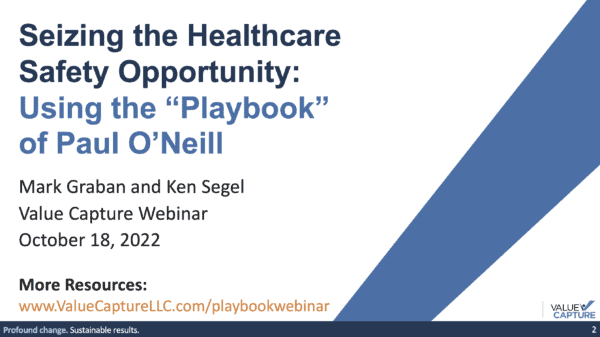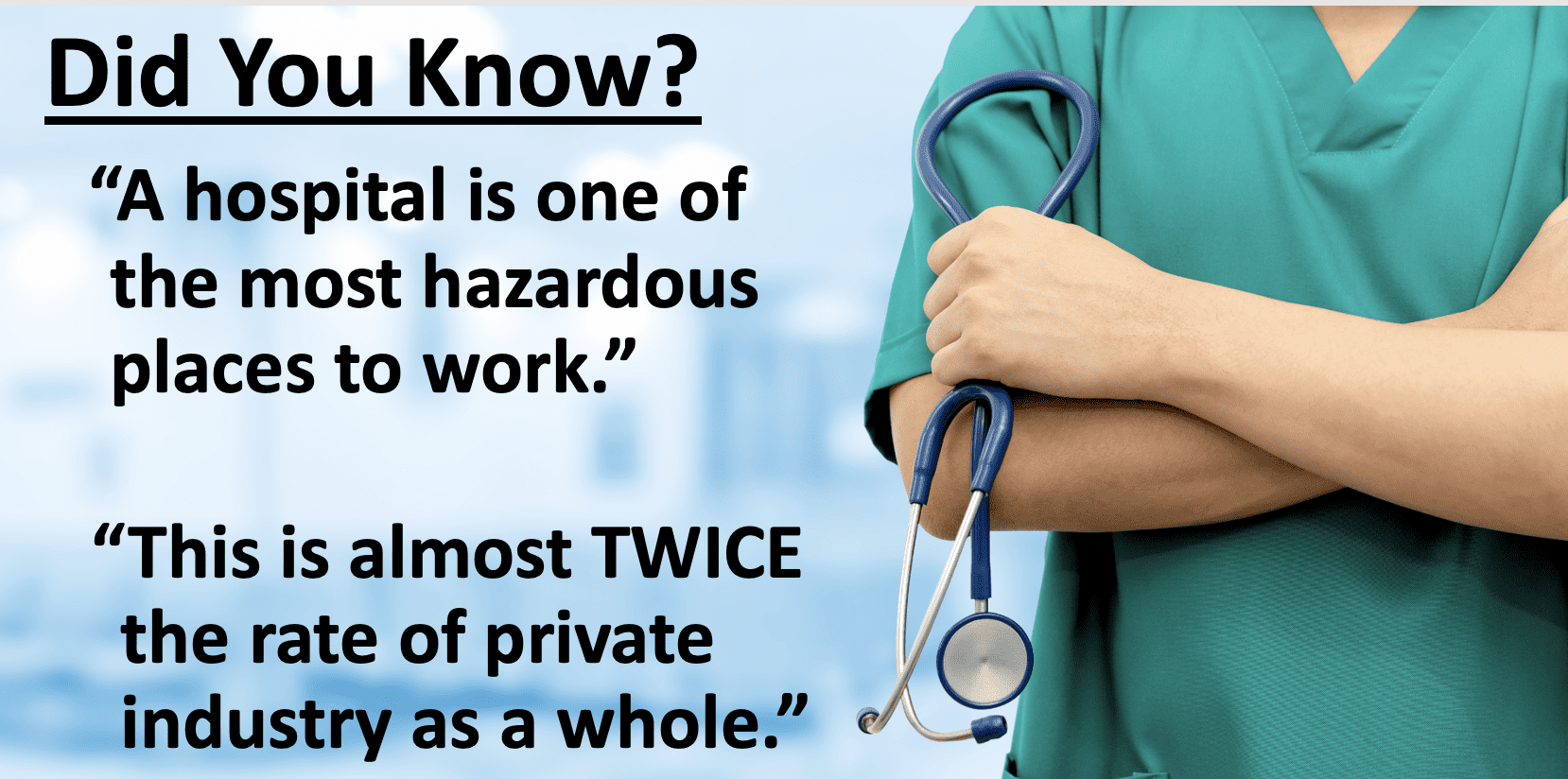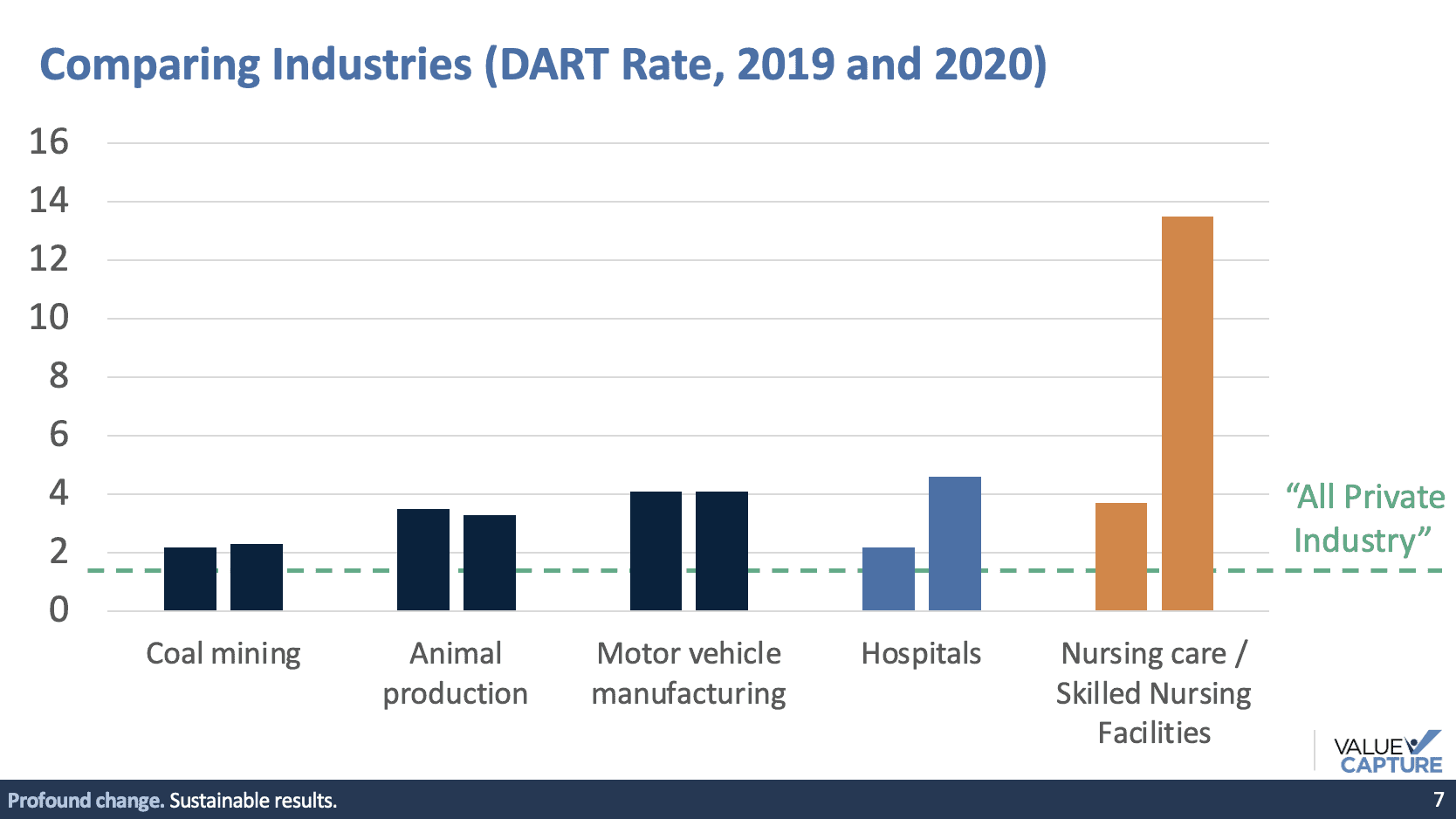You're invited to view the recording of webinar that I co-presented on Tuesday, October 18th, with Ken Segel, the CEO and co-founder of the healthcare advisory firm Value Capture.
Seizing the Healthcare Safety Opportunity: Using the “Playbook” of Paul O'Neill

While the presentation is aimed at healthcare leaders and executives, we think there is a pretty universal message to be shared about the leadership “playbook” (if you will) of the late Paul O'Neill.
This isn't a history lesson… it's a powerful framework that's just as relevant (and just as needed) today.
Promo Video
More Resources
You can also find deeper-dive resources on this page, including:
- Free eBooks
- Videos
- Our slides
- Related podcasts
- Articles and more
Teeing it Up
What's the imperative for change? Why is worker safety such an important issue in healthcare?
Did you know, that according to OSHA,

Wow, did you know that? Is this talked about enough in healthcare (broadly) and in your healthcare organization?'
One way to measure employee harm is the DART rate…
Do you know your organization's “DART” rate? That stands for “Days Away, Restricted, or Transferred.”
Do you know the number for your organization? Or some similar measure? Do you know where you would FIND such information?
Looking at the specific data and gaps:

Even before the 2020 Covid effect, healthcare had higher DART rates than the grand average of “all private industry” – and healthcare has higher DART rates than industries that might be considered “dangerous” like coal mining and animal processing.
Why is that? Do we have to take that for granted? What can leaders do about this?
In the webinar, we'll share how the principles-driven “playbook” provides proven guidance for leaders. Reducing employee harm is a moral imperative — it's an important enough goal, as it is. It's the right thing to do and it's good business to do so.
Focusing on the “unarguable” goal of “zero harm” for employees creates a rallying cry. When people respond to that cry, they'll participate and get better at problem solving… which leads to more generalized “habitual excellence” and reaching the theoretical levels of performance in all of our goals and measures.
Again, please check out the recording of the webinar. Thanks!
Please scroll down (or click) to post a comment. Connect with me on LinkedIn.
Let’s work together to build a culture of continuous improvement and psychological safety. If you're a leader looking to create lasting change—not just projects—I help organizations:
- Engage people at all levels in sustainable improvement
- Shift from fear of mistakes to learning from them
- Apply Lean thinking in practical, people-centered ways
Interested in coaching or a keynote talk? Let’s start a conversation.





![When Was the Last Time a Leader Around You Admitted They Were Wrong? [Poll]](https://www.leanblog.org/wp-content/uploads/2025/07/Lean-Blog-Post-Cover-Image-2025-07-01T212509.843-238x178.jpg)



![When Was the Last Time a Leader Around You Admitted They Were Wrong? [Poll]](https://www.leanblog.org/wp-content/uploads/2025/07/Lean-Blog-Post-Cover-Image-2025-07-01T212509.843-100x75.jpg)